Those with an oily skin type know the struggle when it comes to makeup. You leave the house looking fresh and matte, only to be a shiny mess by your lunch break.
Makeup also tends to slip and move off as the day goes on. Your colorful work of art could turn into a rainbow puddle before your shift is even over.
But fear not, you don’t have to give up on cosmetics and beauty. We’re here to give you suggestions on how to make the right choices so you can look your best all day long.
Apply Primer

Some YouTube makeup gurus may not believe in it, but seasoned veterans know how vital this product is.
That’s right—we’re talking about using a primer.
Before you even start putting on foundation, concealer, and other beauty products you love, a primer should come first.
While others think they can do without it, those with oily skin can get significant benefits from its use. You must include this in your routine for three reasons:
- It reduces oils and mattifies your face before you put on foundation and other cosmetic products.
- It can help manage oil production as some primers pack a double punch with skincare ingredients.
- It will make your makeup last longer. Primers help increase absorbency and make products like foundation stick better.
When choosing a primer, look for those that are lightweight but have a matte finish. Additionally, those with oily skin tend to have larger pores, so choose one that can help blur or minimize their appearance.
Use Non-Comedogenic Products
Those with an oily skin type often face an added problem:
Acne.
And when you have red bumps or blackheads on your face, it makes putting on makeup much tricky, doesn’t it?
A way around this is to opt for makeup products that won’t further aggravate your condition. So when picking your cosmetics, look for those that are labeled as “non-comedogenic.”
What does that term mean?
Non-comedogenic means that the product doesn’t contain or has fewer ingredients that could potentially clog your pores. These ingredients could lead to acne and further worsen oil production.
Try Mineral Makeup
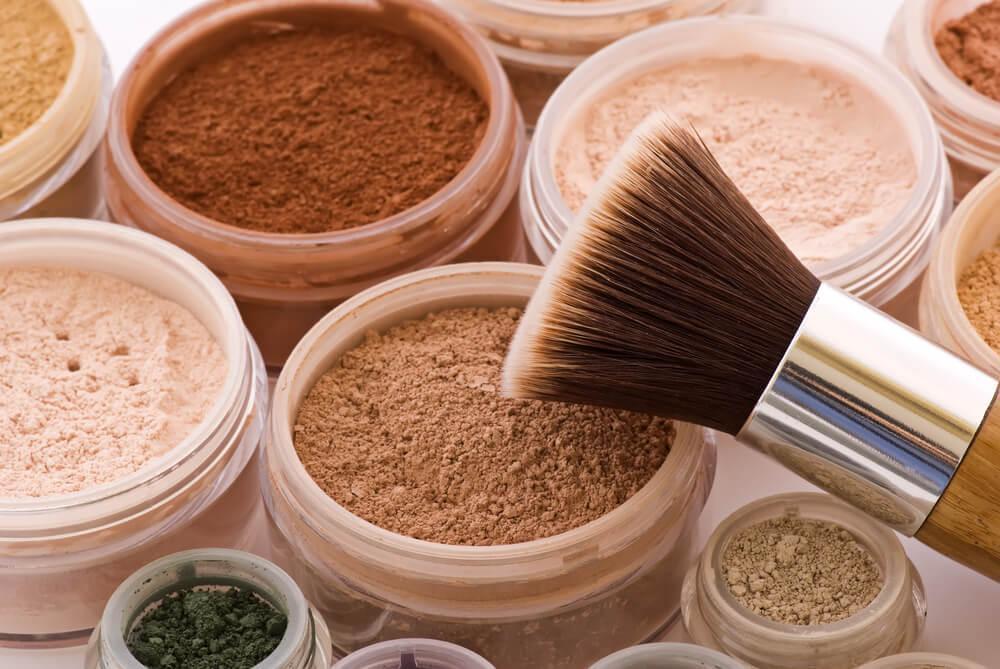
If you want to try something new that you don’t have in your makeup stash, look for mineral makeup. These cosmetic products are organic and come from—you guessed it—minerals. Common ingredients include zinc oxide, titanium dioxide, and iron oxide.
But what makes mineral makeup unique and worth trying?
These products don’t contain some of the other ingredients that can irritate other people’s skin.
What are those components that they don’t have? Some of these skin irritants include the following:
- Fragrance
- Oils
- Parabens
- Preservatives
- Dyes
- Chemicals
Because of the ingredients in mineral makeup, it feels very lightweight on the skin compared to regular cosmetics. Also, because it’s free of irritants, those with oily and sensitive skin favor mineral makeup. It’s also non-comedogenic, so it won’t clog your pores and cause breakouts. Dermatologists highly recommend these types of products.
Look For Foundation in Matte or Satin Finish
When it comes to picking out a liquid foundation, the choices can be overwhelming.
But here’s a tip for those with oily skin: choose a matte or satin finish foundation.
Why does this matter?
Here are three reasons:
- The finish of your foundation can determine how long it lasts. Matte options tend to be more long-wearing compared to sheer or dewy types.
- Quite clearly, these types of foundations will look different. Dewy and sheer products may look greasy on those with oily skin. Matte and satin finishes will dry flat and reduce the look of pores.
- The coverage they provide also depends on the finish. If you have larger pores or acne due to oily skin, matte and satin finishes will give you more coverage. Other foundation types may be too thin to cover blemishes.
Although glass and dewy skin is a popular trend, it’s not the best option for those with oily skin. Your makeup may start out looking fresh in the morning but overly-oily for the rest of the day.
Avoid Touching Your Face—Use Brushes and Sponges
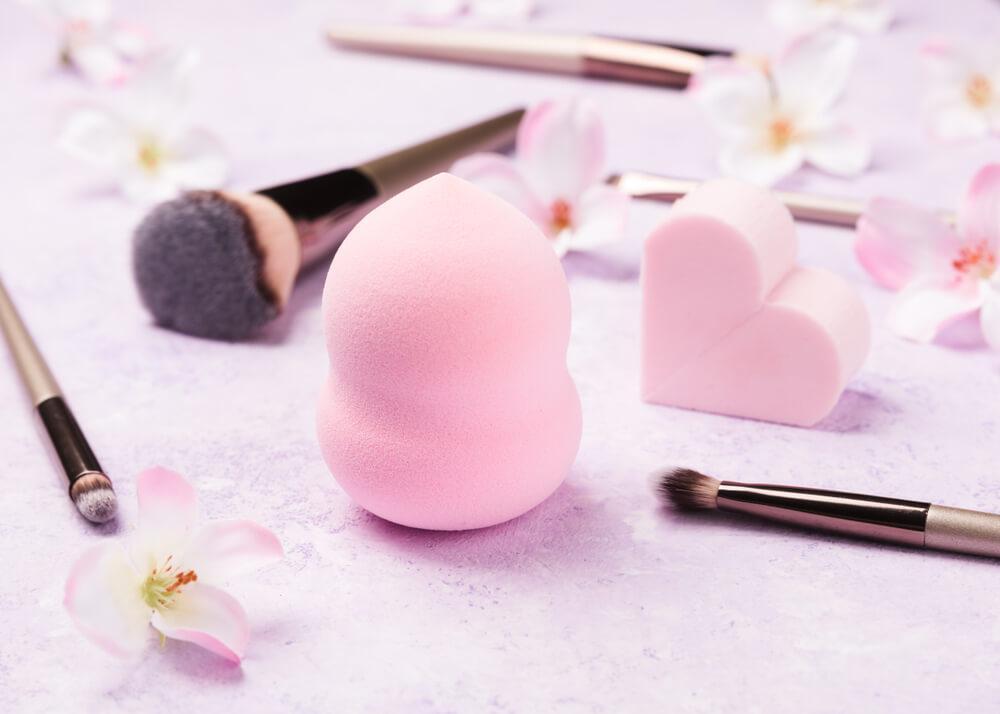
Do you know what can be challenging for anyone?
Trying not to touch your face.
It sounds easy, but it’s a real challenge since we all do it unknowingly. And when it comes to makeup, it’s tempting to blend products in using our fingers. After all, it can be more convenient to do so.
However, not only do our fingers produce oil, but they also carry dirt and germs. These can add to the excess sebum and irritants on our face.
Gross, right?
So when you put on makeup for the day, reach for a brush or sponge instead. Doing so will prevent any added sebum on your skin.
Clean Your Makeup Brushes and Sponges Regularly
While we’re on the subject of makeup tools, remember that it’s also vital for you to sanitize them regularly.
How often should you be doing so?
Experts at the American Academy of Dermatology prescribe washing your brushes and sponges every seven to ten days. This practice will get rid of product buildup, dirt, and oils.
Of course, you can adjust this count, depending on how often you use your tools. Makeup artists will want to clean their brushes every after use for hygienic purposes. Those who don’t use their sponges as often can do without washing them too soon in between.
What should you use to wash them?
Gentle or clarifying shampoos will do the trick. Some beauty brands also sell specialized washes for their brushes and sponges.
Don’t Overlayer Makeup
As mentioned earlier, those with oily skin tend to have bigger pores. Thus, when putting on foundation, one common mistake they do is to layer products for more coverage. They think that the more they use, the more they minimize the look of pores and imperfections.
While it might make sense at first, putting on thick or too many layers of makeup is a big no-no.
Think of it this way:
Too much foundation + oils on the skin = caking
You wouldn’t want your makeup to look like a thick mess, right?
When putting on foundation, go for light layers. If you need extra coverage, you can always build it up little by little. Just be careful not to overdo it. Alternatively, you can use concealer instead, which contains far less oil than foundations.
Use Lip Liner to Keep Lipstick In Place
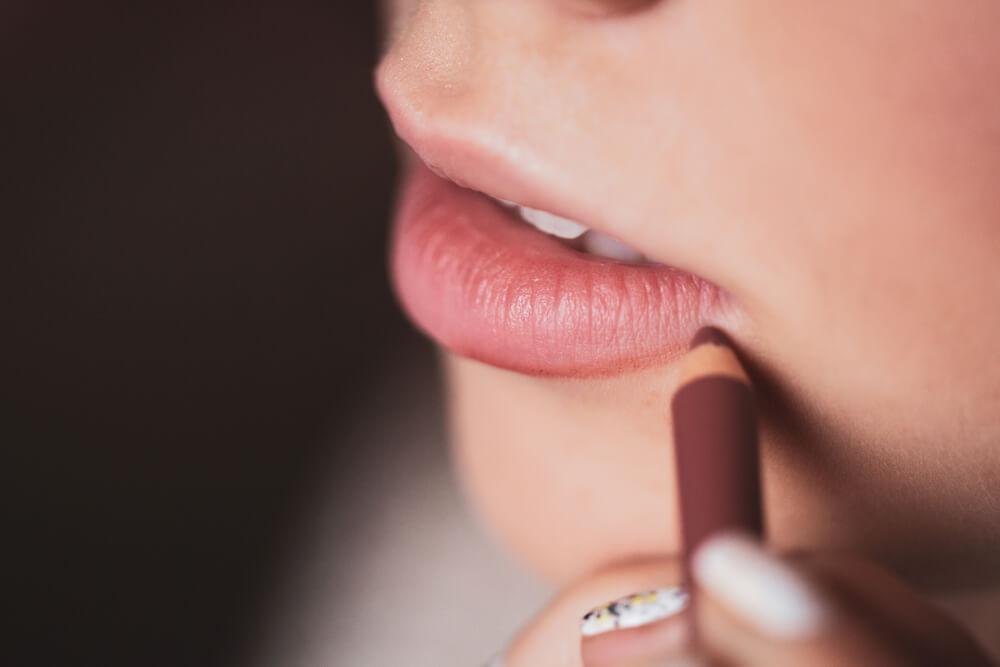
Think your lips are safe from your skin’s oils? Think again!
Oily skin can also affect your lipstick’s longevity.
So how do you help make your lip makeup long-lasting? Use a lip liner!
How does it work? Here are three ways that they help:
- Lip liners can act as primers for other lip products.
- Using it can help bring out better pigmentation of lipsticks and tints. Likewise, they help the color stick better and last longer.
- Lastly, they’re like a barrier that keeps your lipstick from feathering or bleeding off onto your skin.
Most formulas for lip liners have a matte finish, allowing them to last long even against oils.
Don’t Forget Setting Powder and Spray
After you’re done putting on your makeup, you’re going to want to lock it down to keep it from slipping off throughout the day. This step is similar to how artists will finish off a painting with a sealant or varnish.
So how do you lock in your makeup?
A vital step you need to add to your routine is using a setting powder and spray.
Setting powder can suck up extra sebum on your skin. This step keeps oils from seeping throughout the day. Make use of setting powder after you’ve put on your complexion makeup, i.e., your foundation and concealer. The powder can also help prevent your skin from overproducing oils and ruining your whole look.
As for setting spray, this is the last step to putting on cosmetics. This lightweight mist seals your hard-work for the rest of the day. It can also take away any excess powder, allowing your skin to look a little more natural.
Practice Using Blotting Paper
What’s a product you should always have on hand?
Blotting paper.
If you haven’t tried them out before, blotting sheets are thin pieces of paper that are highly absorbent. They take away excess oil on your skin without removing makeup.
But be warned:
These miracle sheets are not a long-term solution for your oily skin. As we mentioned earlier, you cannot change your skin type.
Blotting papers are there for you to freshen up in the middle of the day or touch-up during special events. Despite not being a long-term solution, they get the job done pretty well. These sheets work so well that even the Duchesses of Cambridge and Sussex have them as staples.
Reduce Oil Production Through Skincare
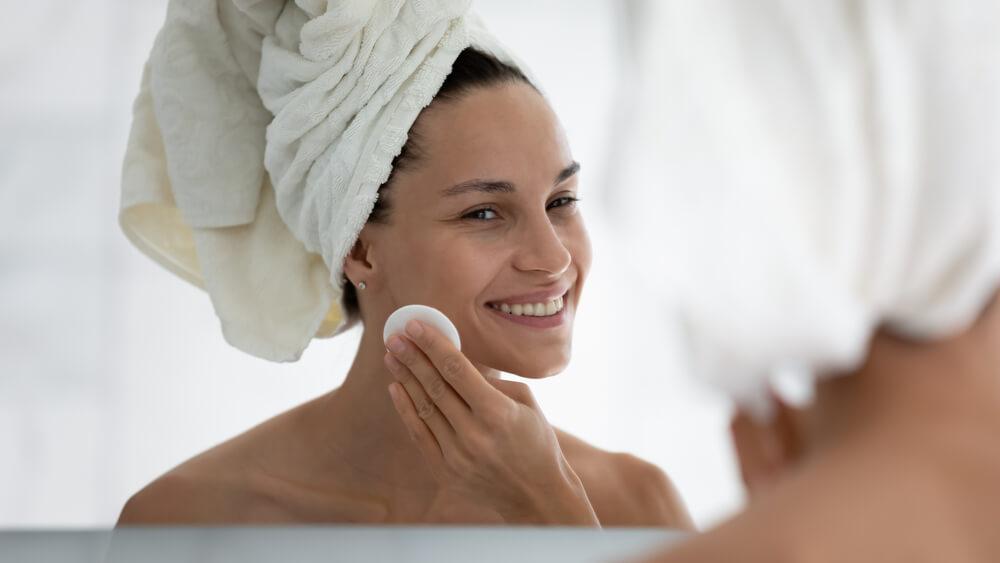
Wait, is skincare considered makeup?
Well, some would argue that it isn’t. Meanwhile, others would still classify it under “cosmetics.”
Regardless of how you want to label it, skincare has a vital role to play when it comes to applying makeup. Your skin is a canvas, and the paint is your cosmetic products.
And although you can’t change your skin type, you can manage oil production, so makeup lasts longer and looks better.
So, where do we start with skincare?
Cleansing
When it comes to cleansing, those with oily skin think they can simply wash the oil away. This thinking leads people to wash too often. However, over-cleansing can remove too much moisture, thus dehydrating your skin and causing irritation. If this happens, your body overcompensates by producing more oil.
Skincare experts recommend washing twice a day at most. Don’t go beyond this count unless you absolutely have to.
When picking a cleanser, choose one that’s gentle on your skin. You absolutely should not, in any case, make use of regular soap. Studies show that using regular soap can change your skin’s pH levels and disrupt the moisture barrier. Cleansers that are meant for your face help you avoid other dermatological problems such as acne and dermatitis.
The next step?
Toning
This part is especially crucial for those with oily skin. Toners balance out your skin’s pH levels and prep it for all the nourishment it’ll receive when you moisturize. Both can help keep oil production at bay.
When choosing toners, look for products that contain witch hazel, glycolic acid, and tea tree extract.
Now, what’s next?
Moisturizing
That’s right; even with oily skin, you cannot skip this step.
But won’t that worsen oil production?
The definitive answer: no, it won’t.
Oily skin can also be dehydrated. Oils in the skin are different from moisture. You can have an oily skin type but lack hydration. Dehydrated skin can be any skin type, oily, dry, or combination. And as mentioned earlier, it can worsen other problems such as oil overproduction.
For those with oily skin, opt for gel-type moisturizers instead of creams. This way, you get the moisture without the heavy, sticky feeling. You can also look for products that contain hyaluronic acid. These options are intensely hydrating but feel lightweight on your skin.
Other skincare products you can try are clay masks.
Before you put on makeup, prep your skin with something like green zeolite clay, red kaolin clay, fuller’s earth clay. These masks can help decrease oil production and soak up excess sebum on your face.
Lastly, don’t forget to exfoliate at least once a week.
What does exfoliating do?
This step gets rid of dead skin cells that your skin may have problem shedding due to oils. Exfoliating also gets rid of excess oil and dirt that can further clog your pores and leave you looking greasy.
But avoid overdoing it. Instead, pick a gentle exfoliator that won’t leave scars on your skin. Alternatively, you can make use of a soft electronic brush.
Summary
Although you can’t change your skin type, there are steps you can follow to manage shine and excess oil when you use makeup.
Remember to make use of primer and lip liner to help makeup last longer. When choosing products, look for those that are suitable for oily skin such as non-comedogenic and mineral makeup. Likewise, choose matte and satin finishes for foundations. Blotting papers, setting powders, and sprays will keep your makeup stay throughout the day. Also, keep your fingers off your face by using regularly-washed brushes and sponges instead.
Additionally, try to manage oil production even before you put on makeup. Developing a proper skincare routine is vital in keeping your skin healthy and prepped for cosmetics.
With these tips in your arsenal, we guarantee you won’t be a shiny mess but instead become the glowing beauty that you are.

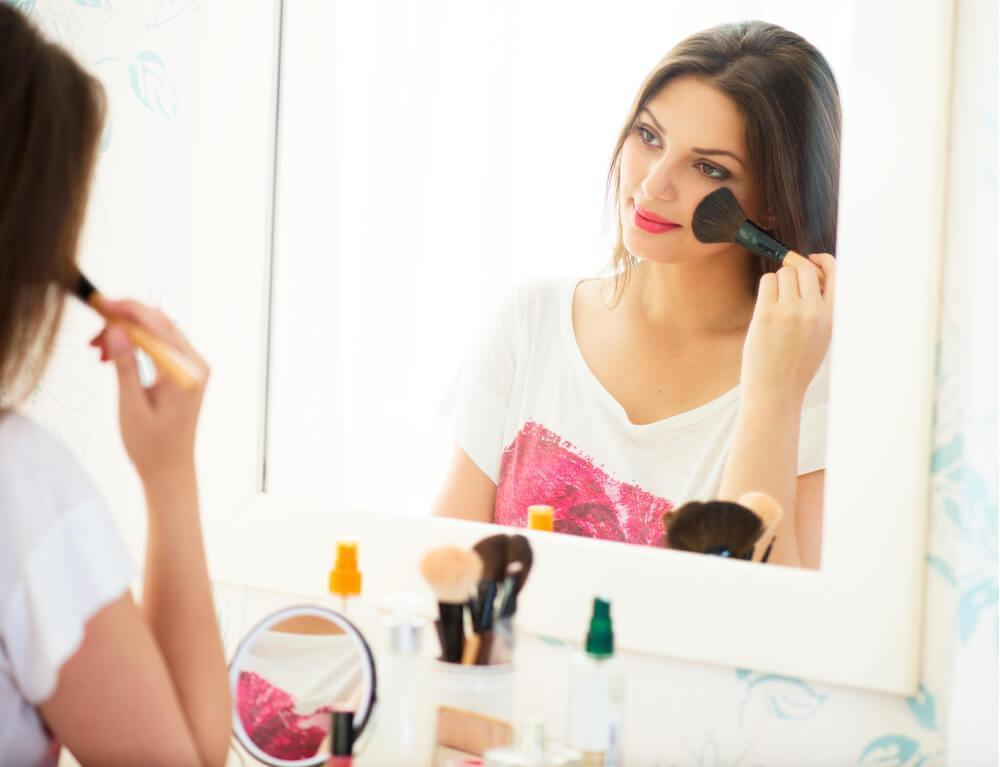
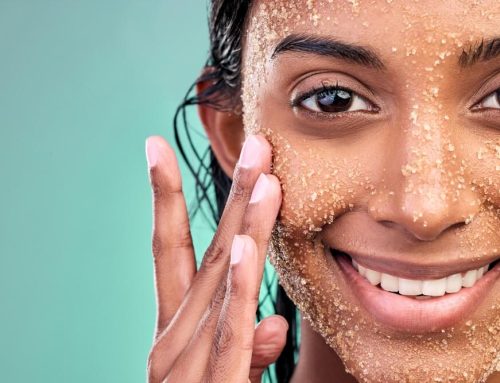

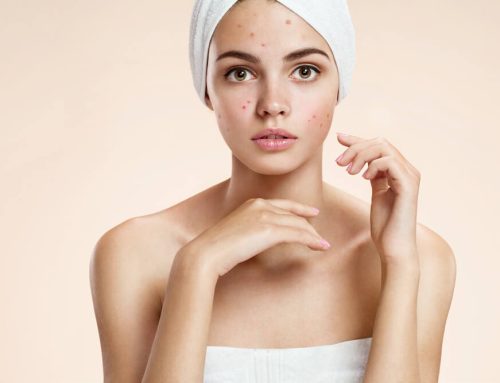
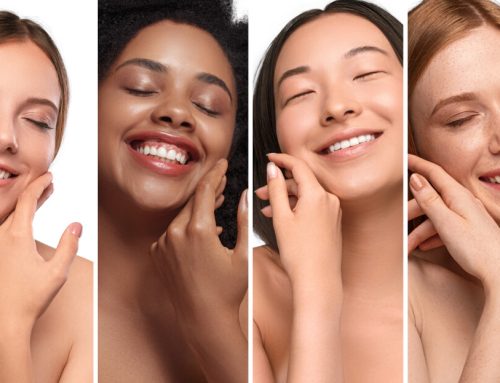
Leave A Comment